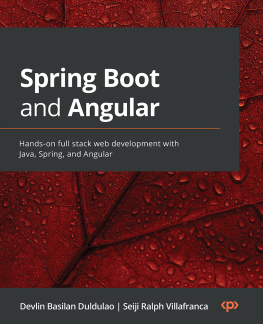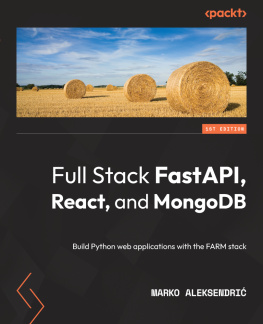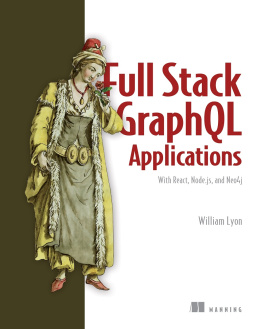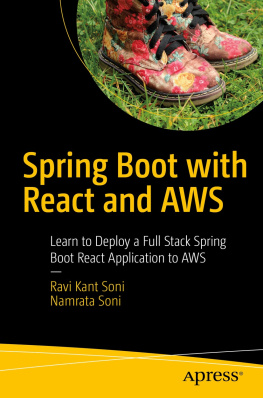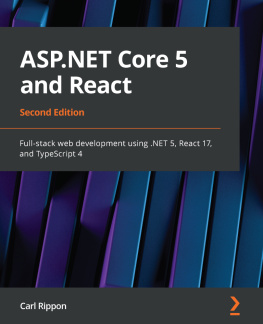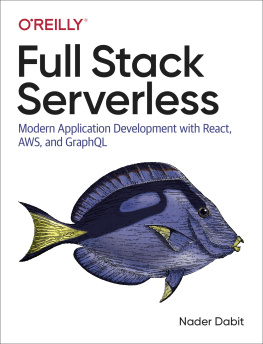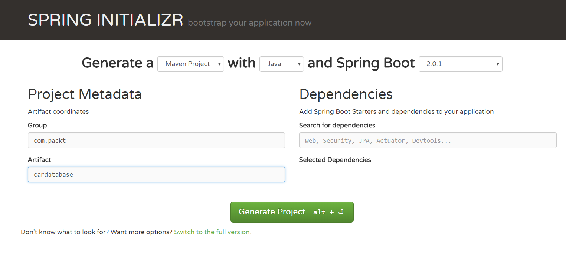Juha Hinkula [Juha Hinkula] - Hands-On Full Stack Development with Spring Boot 2.0 and React
Here you can read online Juha Hinkula [Juha Hinkula] - Hands-On Full Stack Development with Spring Boot 2.0 and React full text of the book (entire story) in english for free. Download pdf and epub, get meaning, cover and reviews about this ebook. year: 2018, publisher: Packt Publishing, genre: Computer. Description of the work, (preface) as well as reviews are available. Best literature library LitArk.com created for fans of good reading and offers a wide selection of genres:
Romance novel
Science fiction
Adventure
Detective
Science
History
Home and family
Prose
Art
Politics
Computer
Non-fiction
Religion
Business
Children
Humor
Choose a favorite category and find really read worthwhile books. Enjoy immersion in the world of imagination, feel the emotions of the characters or learn something new for yourself, make an fascinating discovery.
- Book:Hands-On Full Stack Development with Spring Boot 2.0 and React
- Author:
- Publisher:Packt Publishing
- Genre:
- Year:2018
- Rating:5 / 5
- Favourites:Add to favourites
- Your mark:
Hands-On Full Stack Development with Spring Boot 2.0 and React: summary, description and annotation
We offer to read an annotation, description, summary or preface (depends on what the author of the book "Hands-On Full Stack Development with Spring Boot 2.0 and React" wrote himself). If you haven't found the necessary information about the book — write in the comments, we will try to find it.
Develop efficient and modern full-stack applications using Spring Boot and React 16
Key Features- Develop resourceful backends using Spring Boot and faultless frontends using React.
- Explore the techniques involved in creating a full-stack app by going through a methodical approach.
- Learn to add CRUD functionalities and use Material UI in the user interface to make it more user-friendly.
Apart from knowing how to write frontend and backend code, a full-stack engineer has to tackle all the problems that are encountered in the application development life cycle, starting from a simple idea to UI design, the technical design, and all the way to implementing, testing, production, deployment, and monitoring. This book covers the full set of technologies that you need to know to become a full-stack web developer with Spring Boot for the backend and React for the frontend.
This comprehensive guide demonstrates how to build a modern full-stack application in practice. This book will teach you how to build RESTful API endpoints and work with the data access Layer of Spring, using Hibernate as the ORM. As we move ahead, you will be introduced to the other components of Spring, such as Spring Security, which will teach you how to secure the backend. Then, we will move on to the frontend, where you will be introduced to React, a modern JavaScript library for building fast and reliable user interfaces, and its app development environment and components.
You will also create a Docker container for your application. Finally, the book will lay out the best practices that underpin professional full-stack web development.
What you will learn- Create a RESTful web service with Spring Boot
- Understand how to use React for frontend programming
- Gain knowledge of how to create unit tests using JUnit
- Discover the techniques that go into securing the backend using Spring Security
- Learn how to use Material UI in the user interface to make it more user-friendly
- Create a React app by using the Create React App starter kit made by Facebook
Java developers who are familiar with Spring, but have not yet built full-stack applications
Downloading the example code for this book You can download the example code files for all Packt books you have purchased from your account at http://www.PacktPub.com. If you purchased this book elsewhere, you can visit http://www.PacktPub.com/support and register to have the files e-mailed directly to you.
Juha Hinkula [Juha Hinkula]: author's other books
Who wrote Hands-On Full Stack Development with Spring Boot 2.0 and React? Find out the surname, the name of the author of the book and a list of all author's works by series.

![Juha Hinkula [Juha Hinkula] Hands-On Full Stack Development with Spring Boot 2.0 and React](/uploads/posts/book/119460/thumbs/juha-hinkula-juha-hinkula-hands-on-full-stack.jpg)
